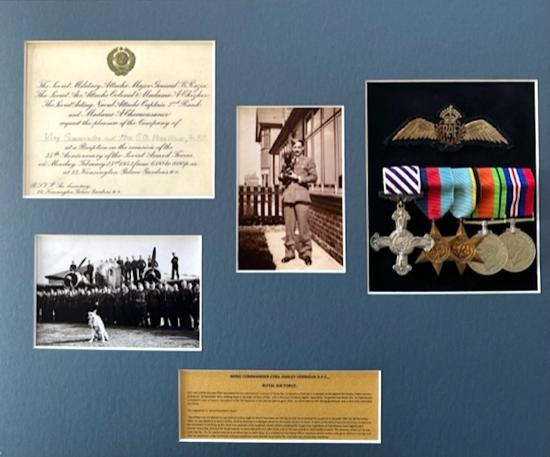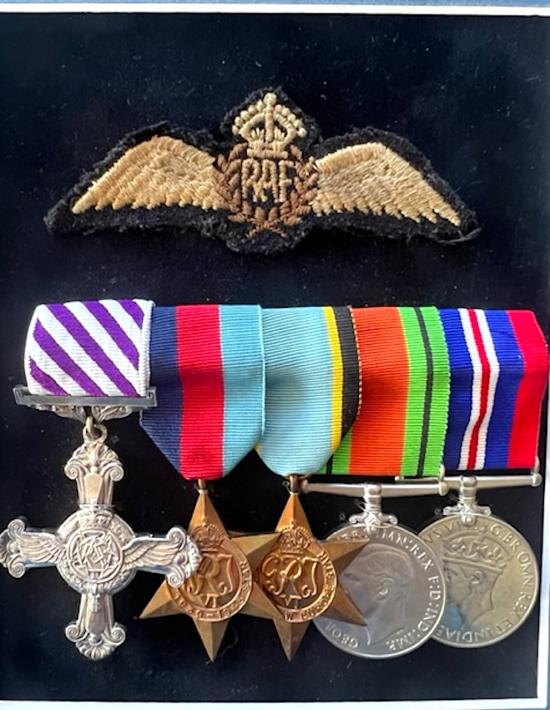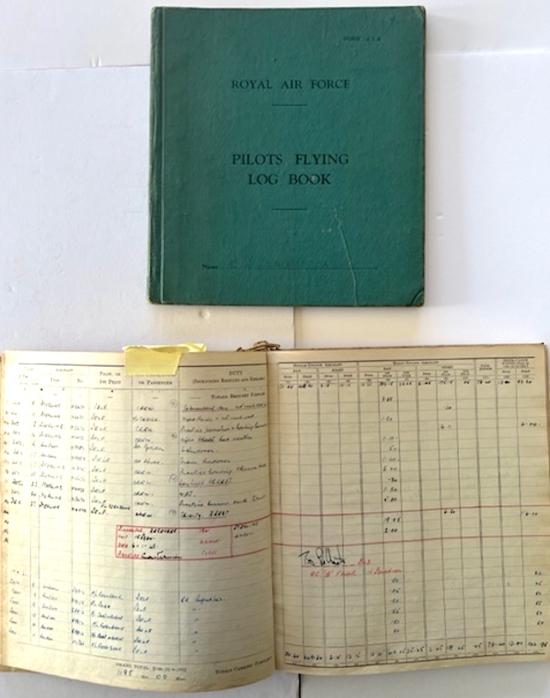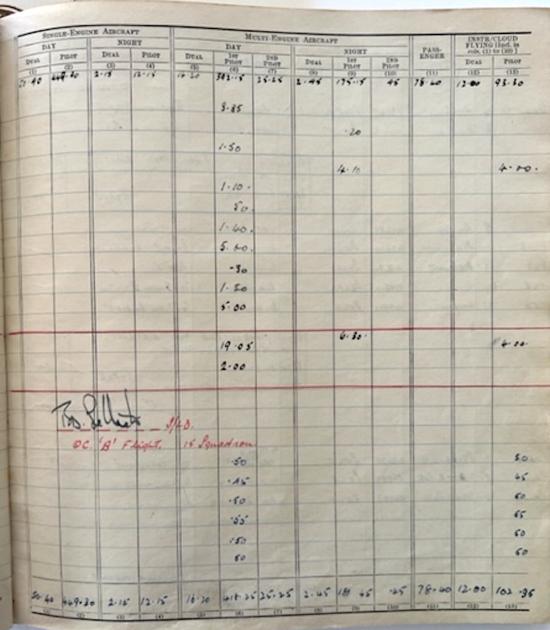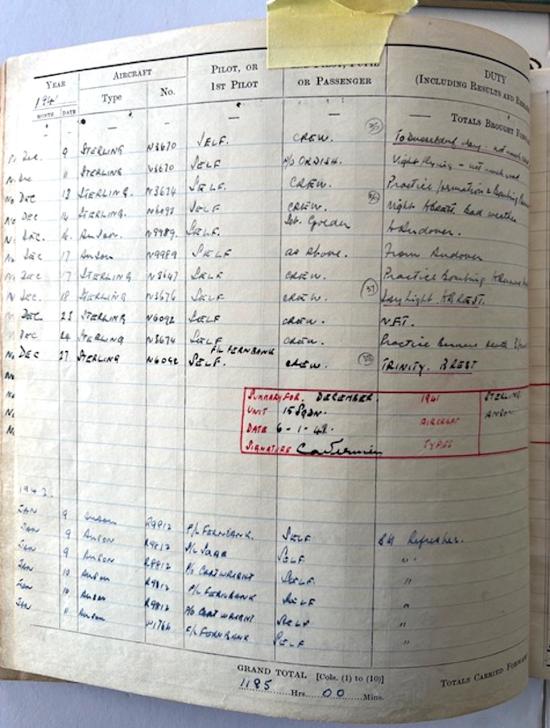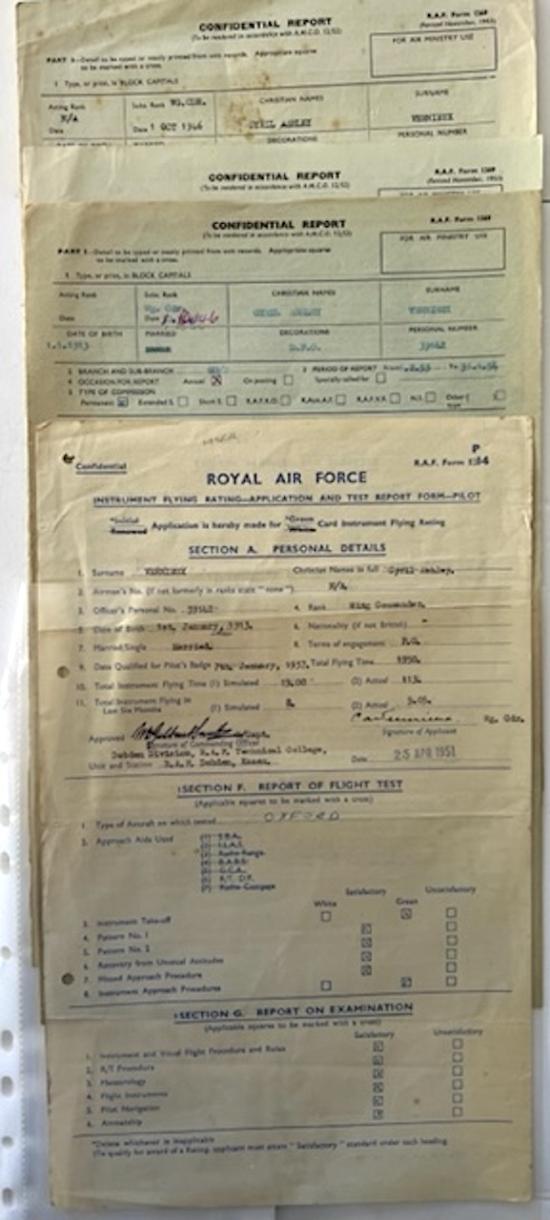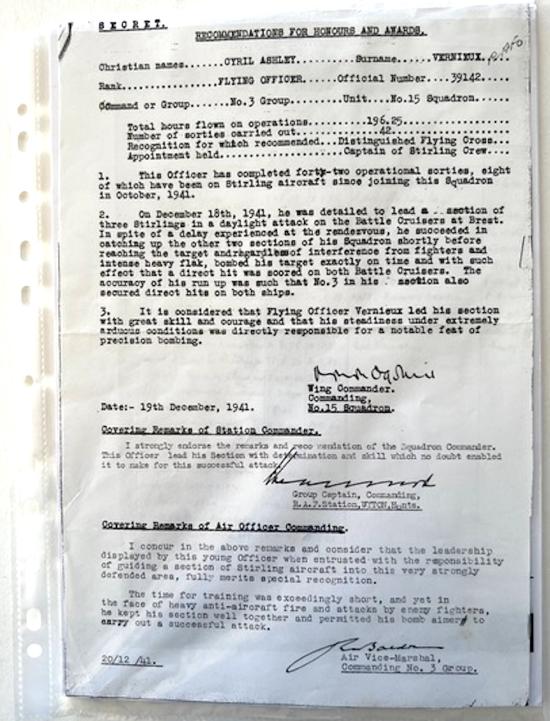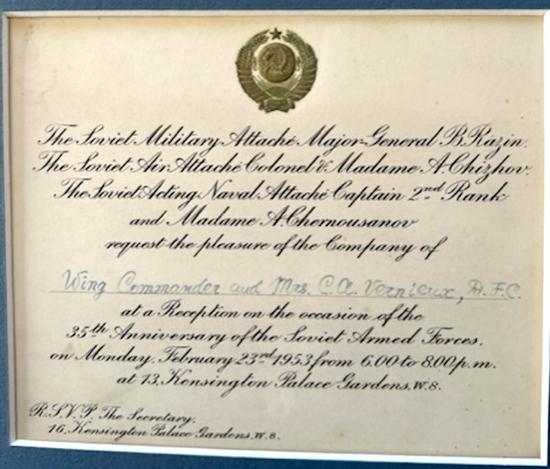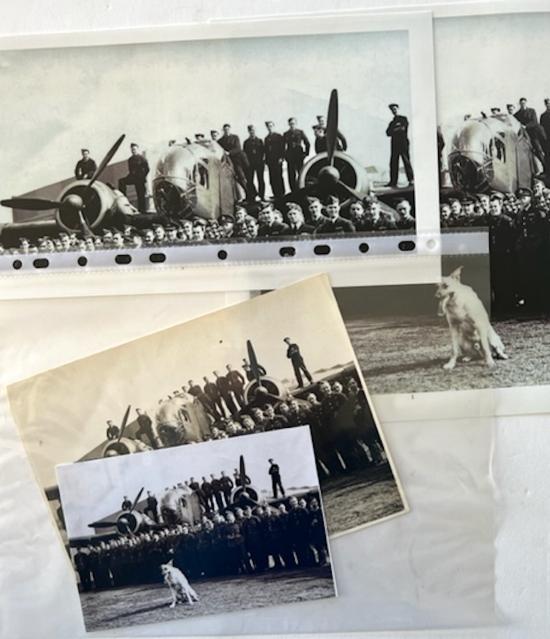WW2 RAF DFC GROUPING TO WING COMMANDER C. A. VERNIEUX - FOR A SUCCESSFUL ATTACK ON THE GERMAN BATTLE CRUISERS SCHARNHORST & GNEISENAU
A comprehensive Distinguished Flying Cross group of 5 to Wing Commander Cyril Ashley Vernieux, Royal Air Force, along with pilot's log books, photo's and supporting paperwork.
A superb Second World War D.F.C. group of five awarded to Wing Commander C. A. Vernieux, Royal Air Force, who was decorated for his command of a section of three No. 15 Squadron Stirlings in a successful daylight strike against the enemy battle cruisers at Brest on18 December 1941: leading them in through curtains of flak - and in the face of enemy fighter opposition - he gained two direct hits. He had already completed a tour of duty in Hampdens of No. 50 Squadron in the period April-August 1940 - no mean feat for the flying glasshouse' was a slow and vulnerable war horse.
Distinguished Flying Cross, G.VI.R., the reverse officially dated '1941', in its Royal Mint case of issue; 1949-45 Star; Air Crew Europe Star; Defence and War Medals 1939-45. Good very fine.
D.F.C. London Gazette 9 January 1942: 'One day in December 1941, a strong force of bomber aircraft carried out a determined attack on the German warships Gneisenau and Scharnhorst at Brest. The operation was carried out in the face of extremely heavy and accurate anti-aircraft fire and determined attacks by enemy fighters. Nevertheless, the air crews engaged pressed home their attacks to the utmost and succeeded in scoring hits on their objectives. Several enemy aircraft were shot down. The success of the operation, which demanded the highest degree of skill and courage, reflects the greatest credit on the efforts of the following officers and airmen who participated in various capacities as leaders and members of aircraft crews.'
The original recommendation states: 'This officer has completed 42 operational sorties, eight of which have been on Stirling aircraft since joining this squadron in October 1941. On 18 December 1941, he was detailed to lead a section of three Stirlings in a daylight attack on the battle cruisers at Brest. In spite of the delay experienced at the rendezvous, he succeeded in catching up the other two sections of his squadron shortly before reaching the target and, regardless of interference from fighters and intense heavy flak, bombed his target exactly on time and with such effect that a direct hit was scored on both battle cruisers. The accuracy of his run up was such that No. 3 in his section also secured direct hits on both ships. It is considered that Flying Officer Vernieux led his section with great skill and courage and that his steadiness under extremely arduous conditions was directly responsible for a notable feat of precision bombing.'
Covering remarks by the Air Vice-Marshal, No. 3 Group: 'I concur in the above remarks and consider that the leadership displayed by this young officer when entrusted with the responsibility of guiding a section of Stirling aircraft into this very strongly defended area, fully merits special recognition. The time for training was exceedingly short, and yet in the face of heavy anti-aircraft fire and attacks by enemy fighters, he kept his section well together and permitted his bomb aimer to carry out a successful attack.'
Cyril Ashley Vernieux was born in January 1913 and commenced pilot training at R.A.F. Wittering in November 1936. Confirmed in the rank of Pilot Officer after gaining his 'Wings' in January 1937, he was serving as a recently promoted Flying Officer in No. 50 Squadron on the outbreak of hostilities in September 1939. He first flew operationally in the Squadron's Hampdens in April 1940, when he undertook a reconnaissance over the Elbe on the 23rd. In May he attacked targets in Cologne, Munich and Salzbergen, in addition to sorties to Flushing and Roermond in Holland. Having then flown another recce. over the Elbe on 1 June, Vernieux and his crew attacked eight further targets in the same month, Aachen, Frankfurt, Koblenz and Osnabruck among them. Then in July-August he raised his tally of operational sorties to the 32, his targets including Bremen, Gelsenkirchen, Wilhelmshaven. Tour-expired, he was quickly back in action after joining No. 15 Squadron - a Stirling unit - in October 1941, flying as 2nd pilot to Squadron Leader Sellick in a dusk strike on Brest on the 22nd. He gained further experience as a 2nd pilot in a return trip to Brest on the first day of November, prior to taking the helm himself in a raid on Mannheim on the 7th. Now fully acquainted with the Stirling's cockpit and controls, he undertook his D.F.C.-winning daylight trip to Brest on 18 December, leading a formation of three aircraft in the face of heavy odds. He was to return to Brest on the 27th and flew two more sorties in April 1942, against Rostock and Kiel.
He remained on the Retired List after a stint of duty at the Air Ministry in the mid-to-late 50s. Vernieux was rested with an appointment at H.Q. Bomber Command and saw no further operational flying. A spell of duty in the Middle East ensued in 1946-47 and he was advanced to Wing Commander in March 1949. Having then entered the 'jet age', Vernieux was placed on the Retired List after a stint of duty at the Air Ministry in the mid-to-late 50s.
Comes with a quantity of original documentation, comprising: (i) The recipient's R.A.F. Pilot's Flying Log Books (2), covering the periods November 1936 to November 1940 and November 1940 to June 1957, bound as one volume; together with a privately maintained R.A.F. Pilot's Flying Log Book (Form 414 type) for the period July 1944 to September 1945. (ii) Three confidential reports from the 1950s and a pair of invitation to the Russian Embassy to mark the 34th and 35th Anniversaries of the Soviet Armed Forces in 1952 and 1953; together with two or three career photographs.
Code: 50156

